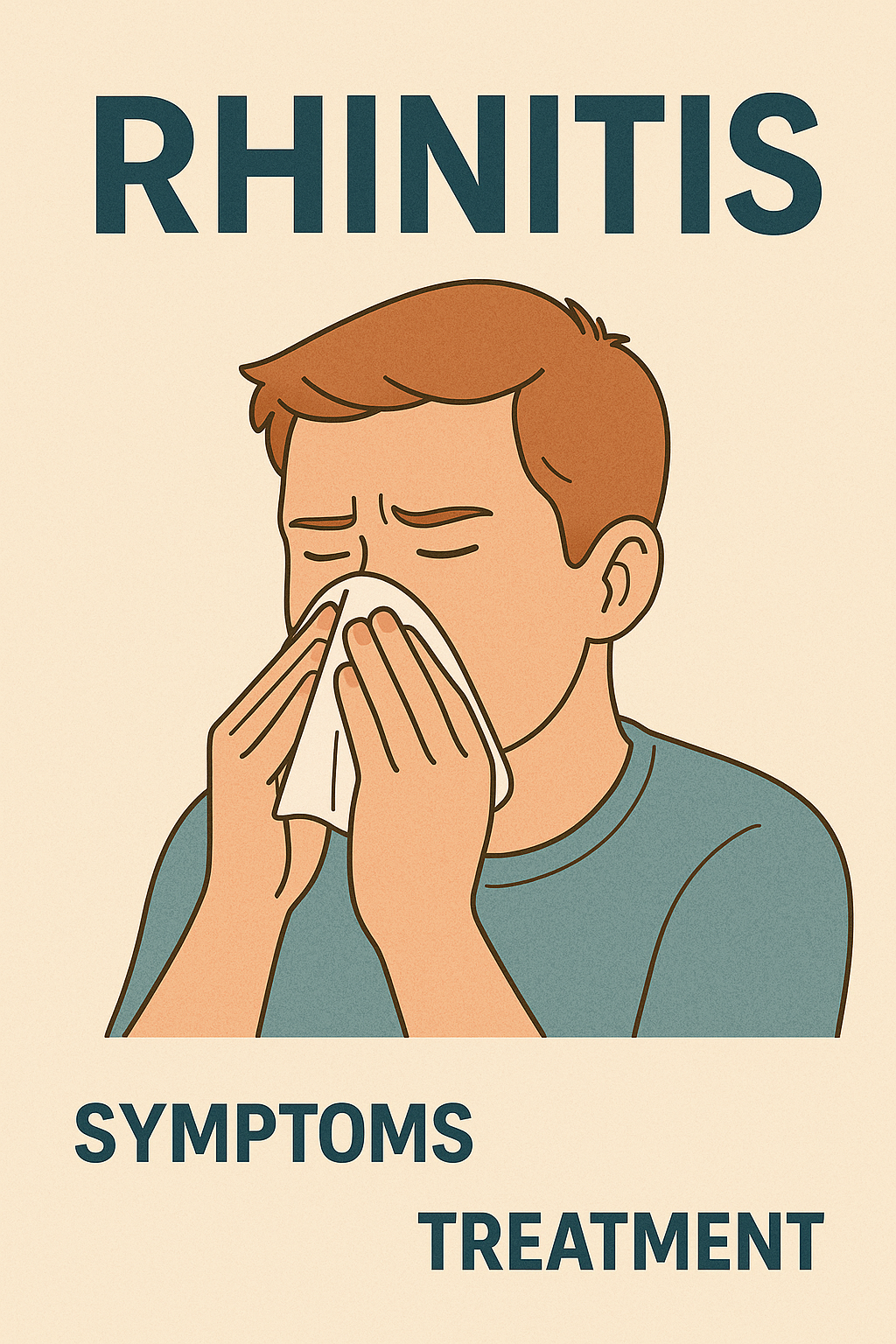
Understanding Rhinitis: Causes, Symptoms, and Treatment Options
Share
What is Rhinitis?
Rhinitis is the inflammation of the mucous membrane inside the nose. It can cause sneezing, congestion, a runny nose, and postnasal drip. There are two main types: allergic rhinitis and non-allergic rhinitis.
Common Causes of Rhinitis
Allergens such as pollen, dust mites, pet dander;
Environmental irritants like smoke or strong odors;
Infections from viruses or bacteria;
Changes in weather or air pressure;
Overuse of nasal sprays;

Symptoms to Watch For
Persistent sneezing
Runny or stuffy nose
Postnasal drip
Itchy nose, eyes, or throat
Headache or facial pressure
Allergic vs. Non-Allergic Rhinitis
Feature Allergic Rhinitis Non-Allergic Rhinitis
Trigger Allergens (pollen, dust) Irritants (smoke, perfume)
Symptoms Sneezing, itchy eyes Congestion, runny nose
Seasonality Often seasonal Year-round
Immune Involvement Yes No
Treatment Options for Rhinitis
Antihistamines – For allergy-related symptoms;
Nasal corticosteroids – To reduce inflammation;
Decongestants – For short-term relief;
Saline nasal sprays – To clean and moisturize nasal passages;
Allergy shots (immunotherapy) – For long-term allergy control;
Avoiding triggers – Minimize exposure to allergens or irritants;
When to See a Doctor
If your symptoms persist for more than 10 days, are severe, or interfere with your daily life, it's important to consult a healthcare provider. Chronic rhinitis may require specialized treatment.
Final Thoughts
Rhinitis can be more than just a nuisance—it can impact your quality of life. By understanding the causes and treatment options, you can take steps to manage your symptoms and breathe easier every day.
